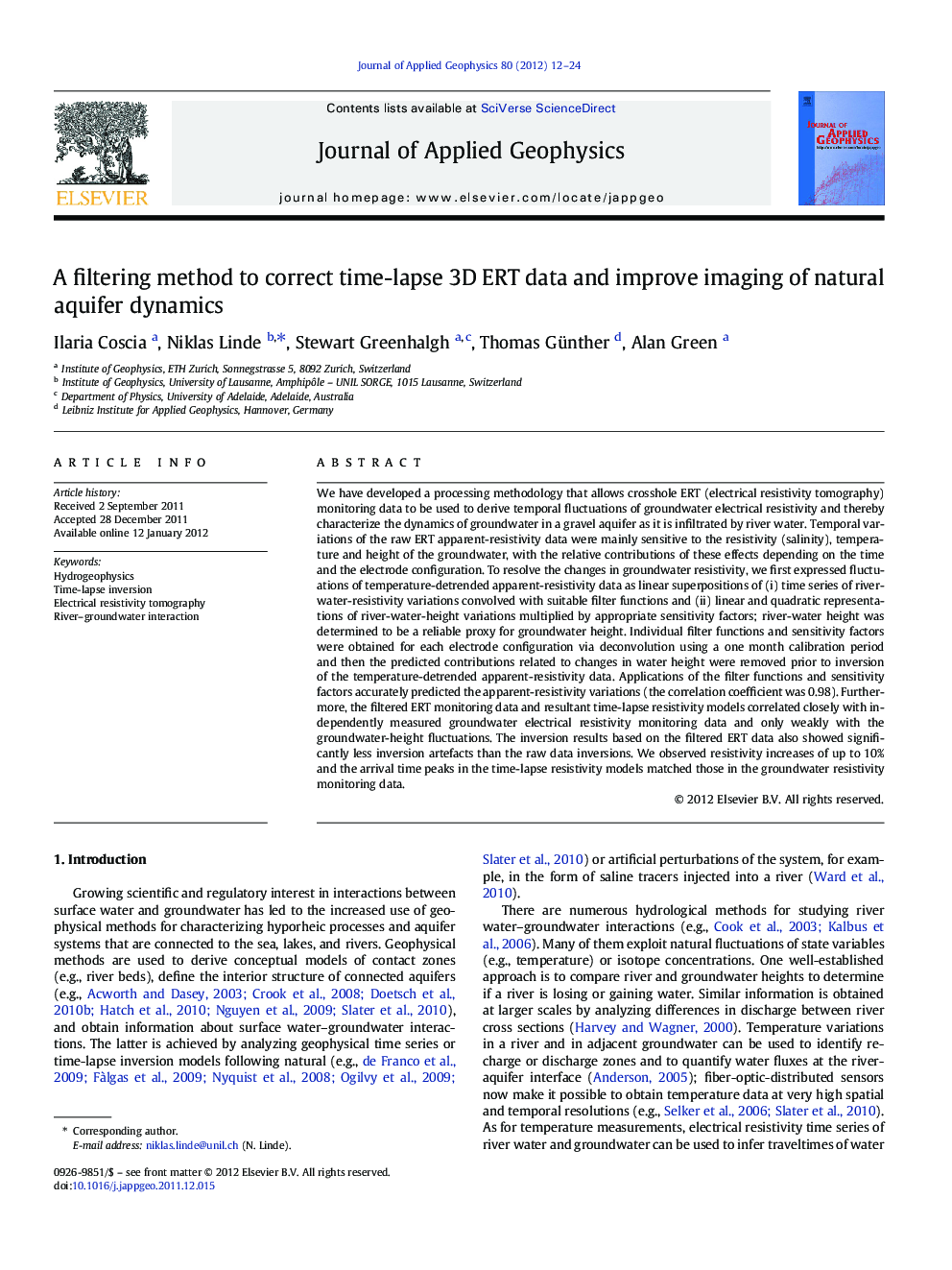| کد مقاله | کد نشریه | سال انتشار | مقاله انگلیسی | نسخه تمام متن |
|---|---|---|---|---|
| 4740648 | 1641171 | 2012 | 13 صفحه PDF | دانلود رایگان |

We have developed a processing methodology that allows crosshole ERT (electrical resistivity tomography) monitoring data to be used to derive temporal fluctuations of groundwater electrical resistivity and thereby characterize the dynamics of groundwater in a gravel aquifer as it is infiltrated by river water. Temporal variations of the raw ERT apparent-resistivity data were mainly sensitive to the resistivity (salinity), temperature and height of the groundwater, with the relative contributions of these effects depending on the time and the electrode configuration. To resolve the changes in groundwater resistivity, we first expressed fluctuations of temperature-detrended apparent-resistivity data as linear superpositions of (i) time series of river-water-resistivity variations convolved with suitable filter functions and (ii) linear and quadratic representations of river-water-height variations multiplied by appropriate sensitivity factors; river-water height was determined to be a reliable proxy for groundwater height. Individual filter functions and sensitivity factors were obtained for each electrode configuration via deconvolution using a one month calibration period and then the predicted contributions related to changes in water height were removed prior to inversion of the temperature-detrended apparent-resistivity data. Applications of the filter functions and sensitivity factors accurately predicted the apparent-resistivity variations (the correlation coefficient was 0.98). Furthermore, the filtered ERT monitoring data and resultant time-lapse resistivity models correlated closely with independently measured groundwater electrical resistivity monitoring data and only weakly with the groundwater-height fluctuations. The inversion results based on the filtered ERT data also showed significantly less inversion artefacts than the raw data inversions. We observed resistivity increases of up to 10% and the arrival time peaks in the time-lapse resistivity models matched those in the groundwater resistivity monitoring data.
► Natural variations can be used as source for ERT monitoring.
► New filtering method for separating time-varying data components.
► First borehole 3D ERT study of surface water–groundwater interaction.
Journal: Journal of Applied Geophysics - Volume 80, May 2012, Pages 12–24